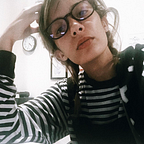Achieving flow to maximize your productivity
There’s nothing as satisfying and blissful as getting lost in your work; so lost that you don’t even notice the time passing by. You may have experienced this sense of timelessness when reading a book that consumes you, practicing your passion, especially in art and music, or describing and talking about something you’re genuinely enthusiastic about. Your stress disappears and you’re authentically happy and in the moment.
Flow is experiencing what it means to be truly present and applying it to your work and productivity. While experiencing flow you are completely immersed in a single task instead of multitasking. For those who have difficulty concentrating and find themselves easily distracting, achieving flow can be a challenge.
Flow isn’t just about improving your working experience, it’s about leading a more present and all around happier life. Developed by Mihaly Csikzentmihalyi, flow should be a psychological lifestyle that should be implemented in as many aspects of life and as frequently as possible.
While increased productivity and happiness are inherently good, the reason flow is so valuable is that it builds a self-confidence that allows us to do the most good in the world, feel euphoric, develop our skills in a positive and euphoric state of mind.
“I developed a theory of optimal experience based on the concept of flow — the state in which people are so involved in an activity that nothing else seems to matter; the experience itself is so enjoyable that people will do it even at great cost, for the sheer sake of doing it”
– Mihaly Csikszentmihalyi, Flow (4)
Experiencing flow needs to be practiced consistently so that each attempt to enter the ether is a little less strained. A good start is choosing something you know you love to practice with, thus training your neurons to easily connect and cultivate into flow. Choosing something you aren’t interested in will just create a greater wedge in your ability to focus on the task and you’ll be much more likely distracted. As you practice cultivating your flow, direct that energy towards activities that are important and productive.
Find the speed spot of flow where your challenge and skill level line up. You should feel challenged enough without feeling ill equipped. You should also work with your ideal Chronotype. Your chronotype involves ‘a personal pattern of circadian rhythms that infuences our physiology and psychology.’
Understanding your most productive time has a lot to do with the time you fall asleep on a ‘free day’, or a day you’re not committed to work, and the time you wake up. You can begin by answering the three questions:
- What time do you go to sleep?
- What time do you wake up?
- What is the mid point of those two times?
I typically go to sleep around 10:00 p.m. and wake up around 6:00 a.m. (yes, on free days…!) so my midpoint is 2:00 a.m.
This puts me in the Larks category which means I perform my best early in the morning. The most common chronotype are Third Birds, which makes sense since the work day is designed for 9–5 productivity.
Most of us fall into the Lark or Third-Bird category. As a result we experience three stages of energy and productivity throughout the day, most of us following this order:
- The Peak
- The Trough
- The Rebound
In my case, my peak is shortly after I first wake up in the morning. I’m my most alert and productive. I’m not as easily distracted, especially if I keep my iPhone tucked away. I have a tall glass of water and walk down my super narrow staircase (I live in a loft) so oxygen is already pumping in my brain.
I typically work from 7 a.m. til 1 p.m. I start to feel hazy at that point so I have a small lunch and sometimes I even nap. Other times I’ll read or do something mindless like go on a walk, listen to music or watch a t.v. show. Around 3:30 p.m. or so I get back to work and rebound shortly for about two or three hours. My peak lasts a lot longer than my rebound, but if I try to get any work done during my trough I really struggle and expel a lot of energy with minimal return.
There are sweet spots within your peak and rebound. This is where you will find your flow.
